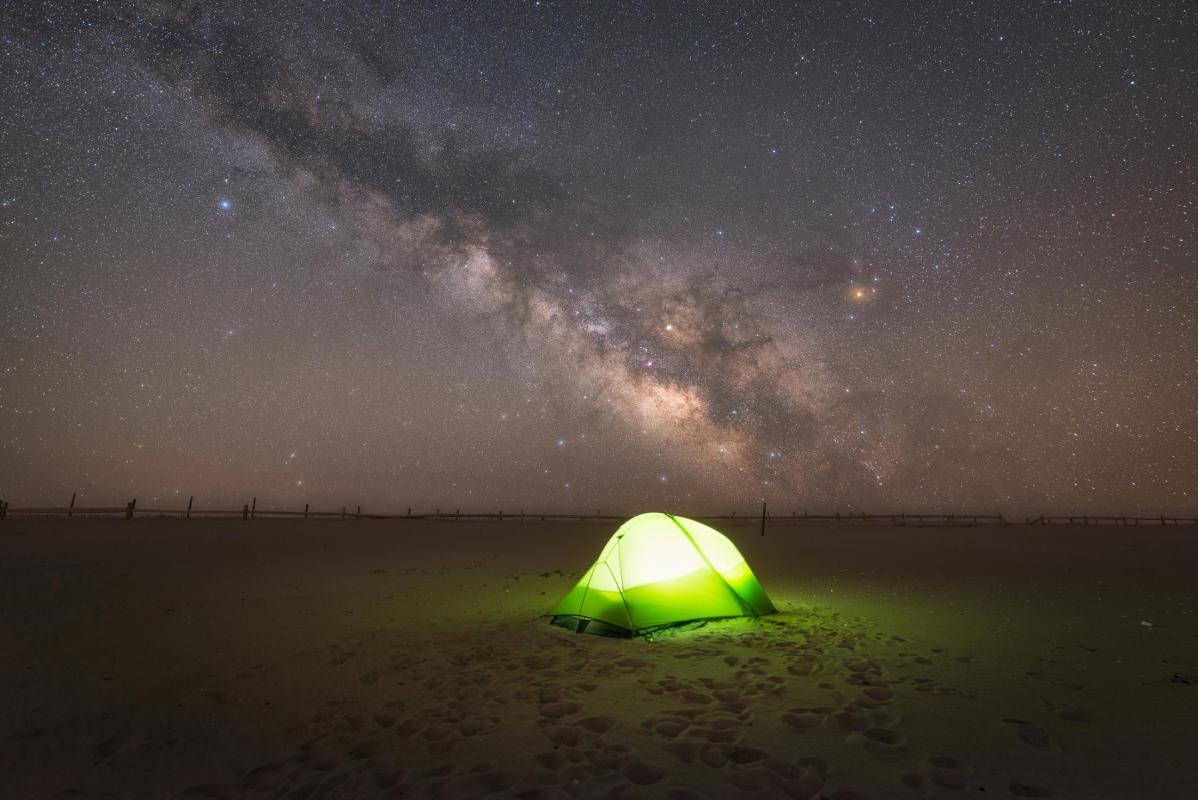
Look up into the night sky. What do you see? If you’re like most of humanity, the answer is simple: not much.
That’s because more than 80 percent of the world currently lives under a night-polluted sky. That means the vast majority of Earth’s inhabitants—99 percent in Europe and America—no longer experience a true night. But the good news is, we can fix light pollution with the flick of a switch.
This week is International Dark Sky Week, a time of events and advocacy organized by the International Dark Sky Association to raise awareness of the perils of a world without darkness.
While it may seem mundane, light pollution—from skyscrapers, streetlights, even your back porch light—has harmful effects on humans and wildlife. It’s also costly to keep all those lights shining, both in terms of real dollars and natural resources to generate all that electricity. Access to actual darkness is so rare, it’s now a commodity, spawning a whole new breed of dark sky tourism. From Pittsburg, PA., to Tucson, AZ, cities across the nation are looking dimmer.
First, the perils. Lack of a truly dark night impacts human circadian rhythms, which means more than just a poor night’s sleep. The detriments to human health are such that the American Medical Association got in on the game in 2016, offering guidance on how to improve streetlights. Animals rely on true day and night for basic survival, especially birds, many species of which migrate at night. Masses of birds fly into tall, lit buildings, or become so disoriented they will fly around until, emaciated and exhausted, they drop dead from the sky. Artificial light accounts for millions of bird deaths annually.
Now a look on the bright side. Success is possible. Perhaps the most poignant example is the more than 20-year partnership between the Audubon Society and The National September 11 Memorial & Museum in New York City on its annual “Tribute In Light.” Each year, the powerful beams turned on to remember the victims of the 9/11 attacks attract thousands of migratory birds. Working together with event promoters and volunteer bird spotters, the Tribute in Light is turned off for 15 minutes whenever bird density reaches a dangerous number, ensuring both a respectful remembrance of those lost on 9/11 and a safe night for wildlife.
Speaking of safe, while we often equate light with safety, as the dark sky movement has grown so too has the body of evidence that more streetlighting does not have a direct correlation on crime reduction. Producing too much light, rather than dimmer or down-directed streetlights, may even have the opposite effect, making it easier for criminals to navigate after dark and generating glare that is dangerous for drivers. A study out of Chicago showed a significant increase in crime committed in alleys after the city ramped up its streetlighting.
Maryland is certainly not the darkest place around, crowded as it is on the busy East Coast with its many large cities. But the state has been proactive, passing a law, for example, requiring only essential and low light-emitting fixtures to be placed on the grounds of state buildings.
So, where can a would-be stargazer celebrate the night sky during International Dark Sky Week? Here are a few suggestions:
Assateague Island: With little to no light pollution nearby, Assateague is one of the darkest places in Maryland and offers your best shot at spotting the Milky Way.
Greenridge State Forest: Nothing says “dark” quite like 49,000 acres of forest tucked up against the greater preserve of the Appalachian Mountains.
Point Lookout: Situated on a peninsula in St. Mary’s County, this former Civil War prison camp is now a peaceful stargazing spot.
Tuckahoe State Park: Rumor has it it’s dark enough here that it’s a hotspot with local stargazing groups for spotting meteor showers on the Eastern Shore.
Your backyard: You don’t need to drive halfway across the state to create a dark sky. Unlike so many forms of global pollution, this is one we can all help mitigate. The National Park Service offers some simple tips for cutting down on light pollution, much of which goes back to what your parents always said: If you aren’t using the lights, turn them off!
Perhaps the best way to mark International Dark Sky Week is to get together with neighbors, have everyone turn off their exterior and interior lights (or pull all your home’s blinds), gather together in someone’s yard, look into the night sky, and see what wonder can be found.
To find a dark sky location near you or anywhere in the world, check out this map.
